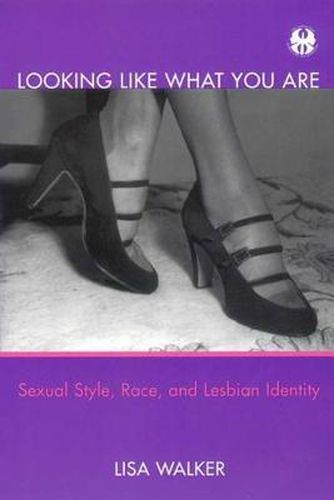Readings Newsletter
Become a Readings Member to make your shopping experience even easier.
Sign in or sign up for free!
You’re not far away from qualifying for FREE standard shipping within Australia
You’ve qualified for FREE standard shipping within Australia
The cart is loading…






Looks can be deceiving, and in a society where one’s status and access to opportunity are largely attendant on physical appearance, the issue of how difference is constructed and interpreted, embraced or effaced, is of tremendous import.
Lisa Walker examines this issue with a focus on the questions of what it means to look like a lesbian, and what it means to be a lesbian but not to look like one. She analyzes the historical production of the lesbian body as marked, and studies how lesbians have used the frequent analogy between racial difference and sexual orientation to craft, emphasize, or deny physical difference. In particular, she explores the implications of a predominantly visible model of sexual identity for the feminine lesbian, who is both marked and unmarked, desired and disavowed.
Walker’s textual analysis cuts across a variety of genres, including modernist fiction such as The Well of Loneliness and Wide Sargasso Sea, pulp fiction of the Harlem Renaissance, the 1950s and the 1960s, post-modern literature as Michelle Cliff’s Abeng, and queer theory.
In the book’s final chapter, How to Recognize a Lesbian, Walker argues that strategies of visibility are at times deconstructed, at times reinscribed within contemporary lesbian-feminist theory.
$9.00 standard shipping within Australia
FREE standard shipping within Australia for orders over $100.00
Express & International shipping calculated at checkout
Looks can be deceiving, and in a society where one’s status and access to opportunity are largely attendant on physical appearance, the issue of how difference is constructed and interpreted, embraced or effaced, is of tremendous import.
Lisa Walker examines this issue with a focus on the questions of what it means to look like a lesbian, and what it means to be a lesbian but not to look like one. She analyzes the historical production of the lesbian body as marked, and studies how lesbians have used the frequent analogy between racial difference and sexual orientation to craft, emphasize, or deny physical difference. In particular, she explores the implications of a predominantly visible model of sexual identity for the feminine lesbian, who is both marked and unmarked, desired and disavowed.
Walker’s textual analysis cuts across a variety of genres, including modernist fiction such as The Well of Loneliness and Wide Sargasso Sea, pulp fiction of the Harlem Renaissance, the 1950s and the 1960s, post-modern literature as Michelle Cliff’s Abeng, and queer theory.
In the book’s final chapter, How to Recognize a Lesbian, Walker argues that strategies of visibility are at times deconstructed, at times reinscribed within contemporary lesbian-feminist theory.